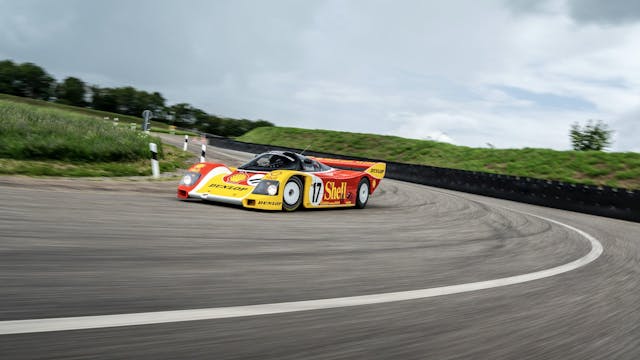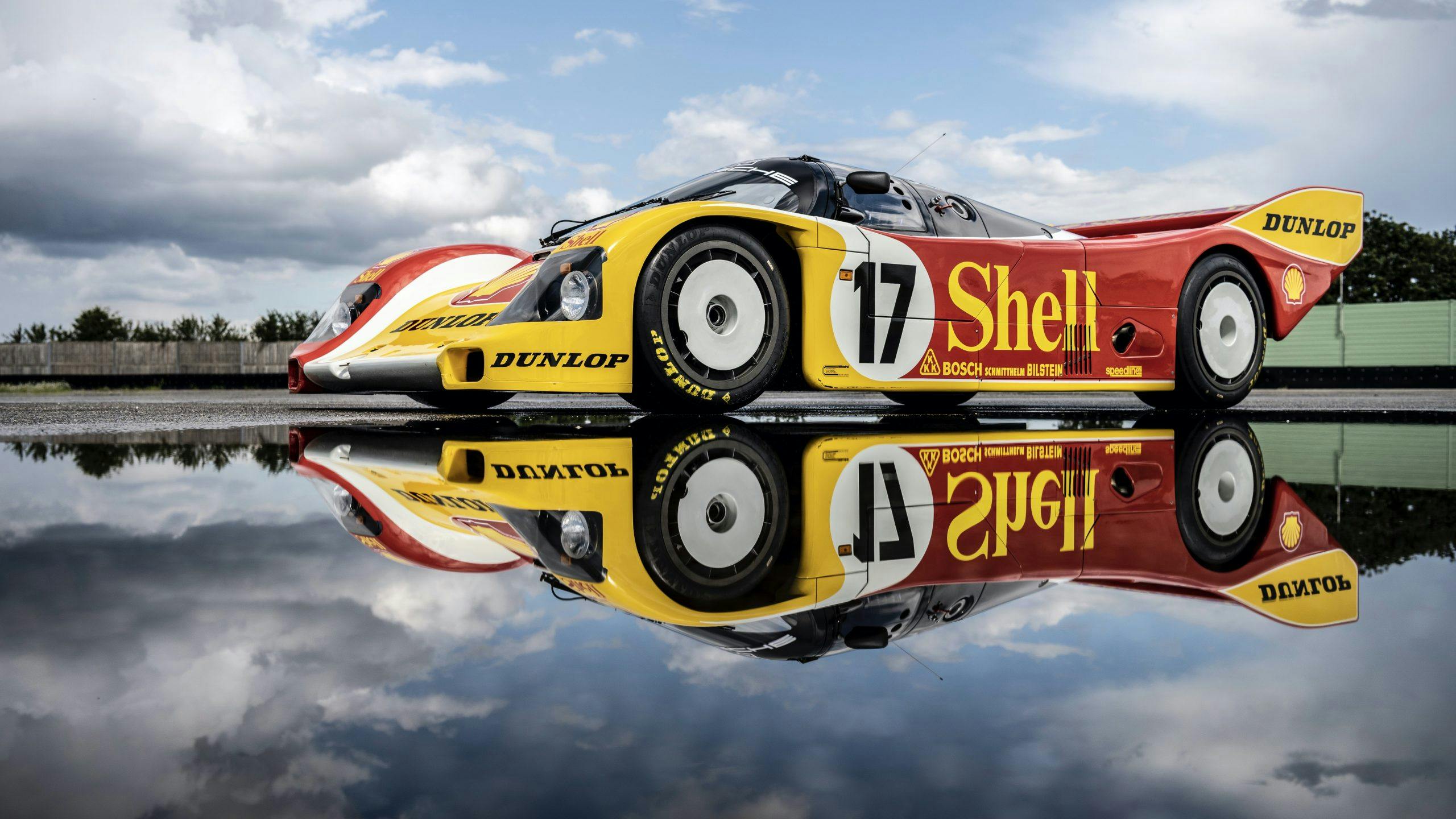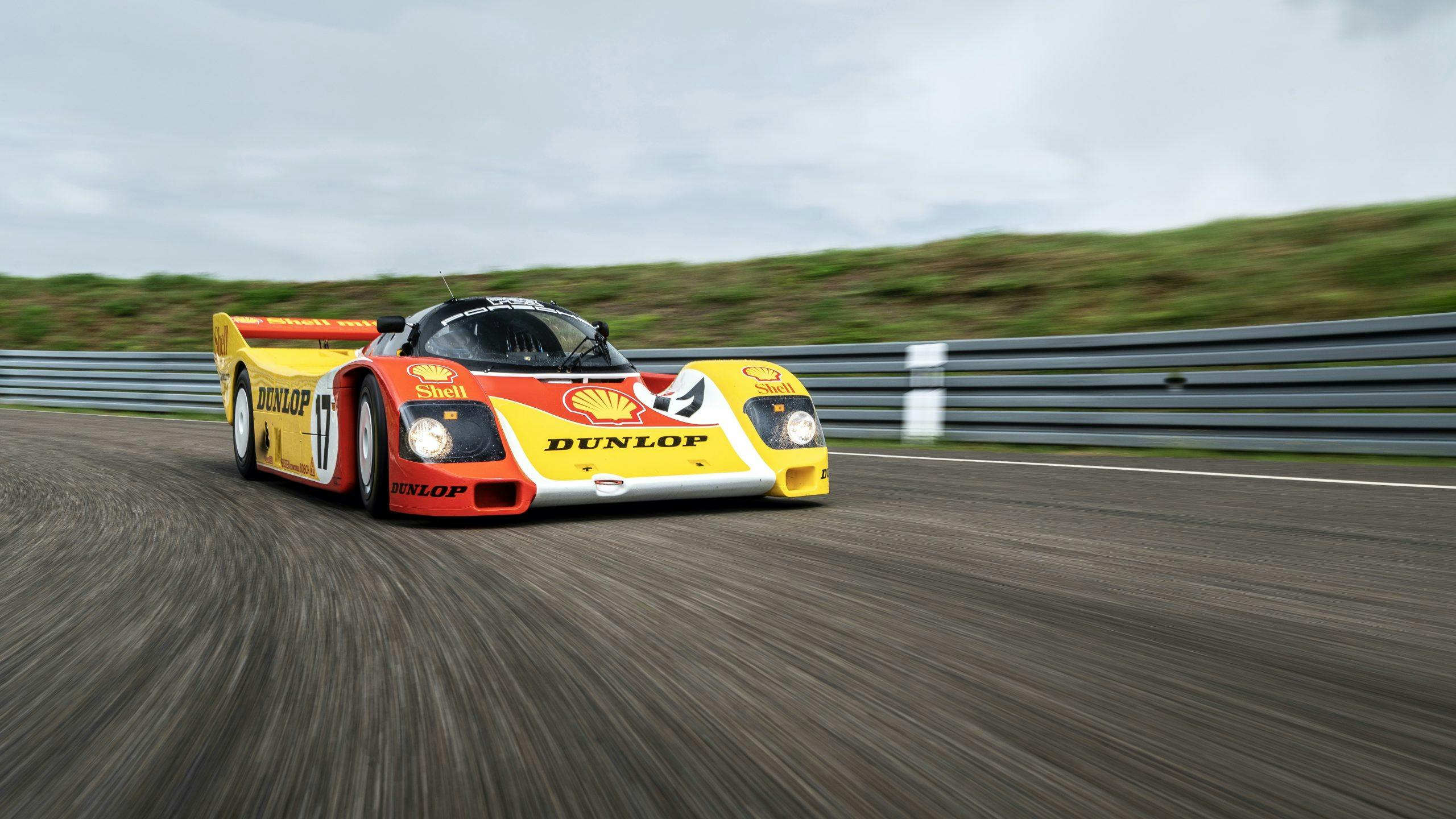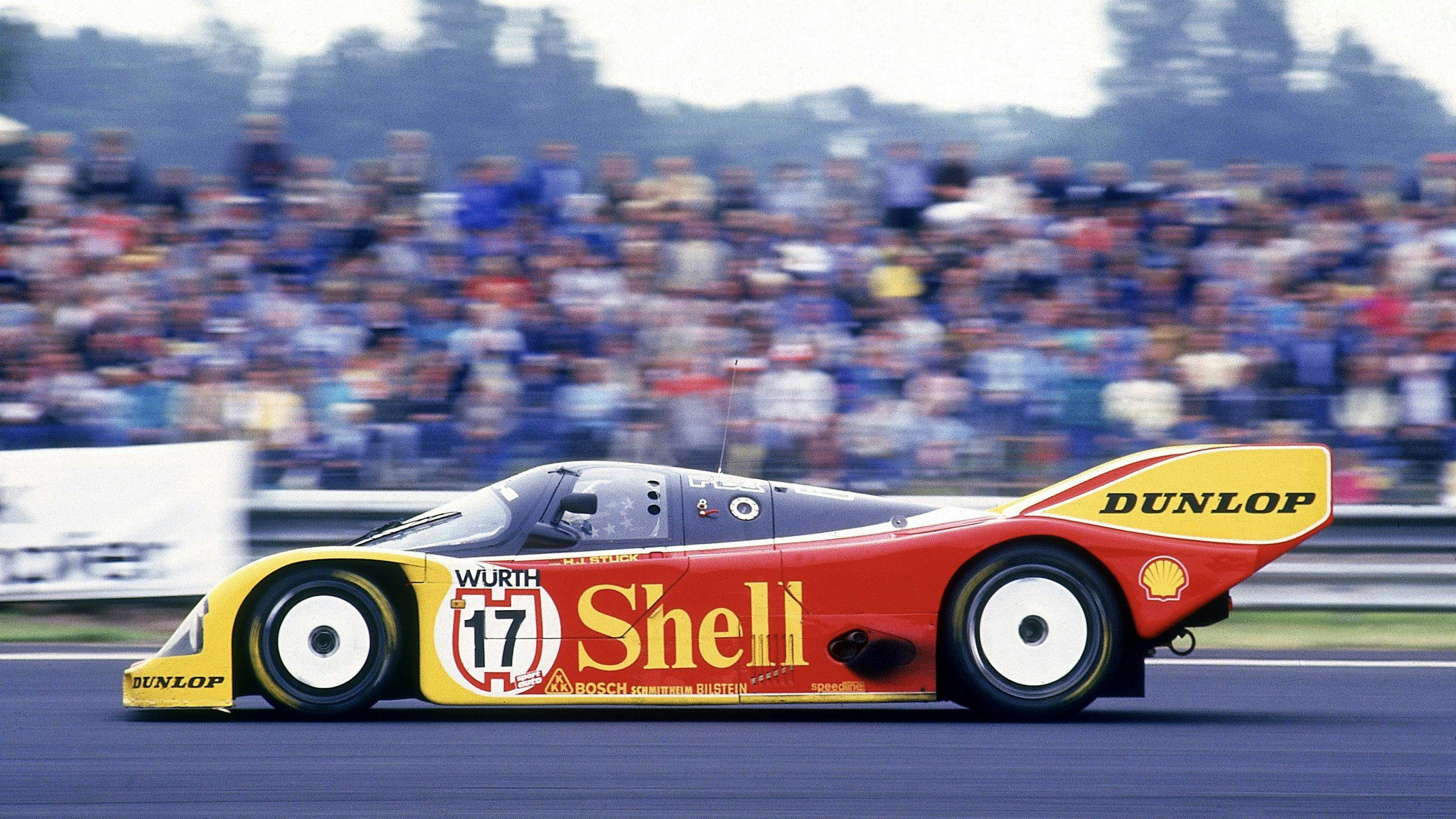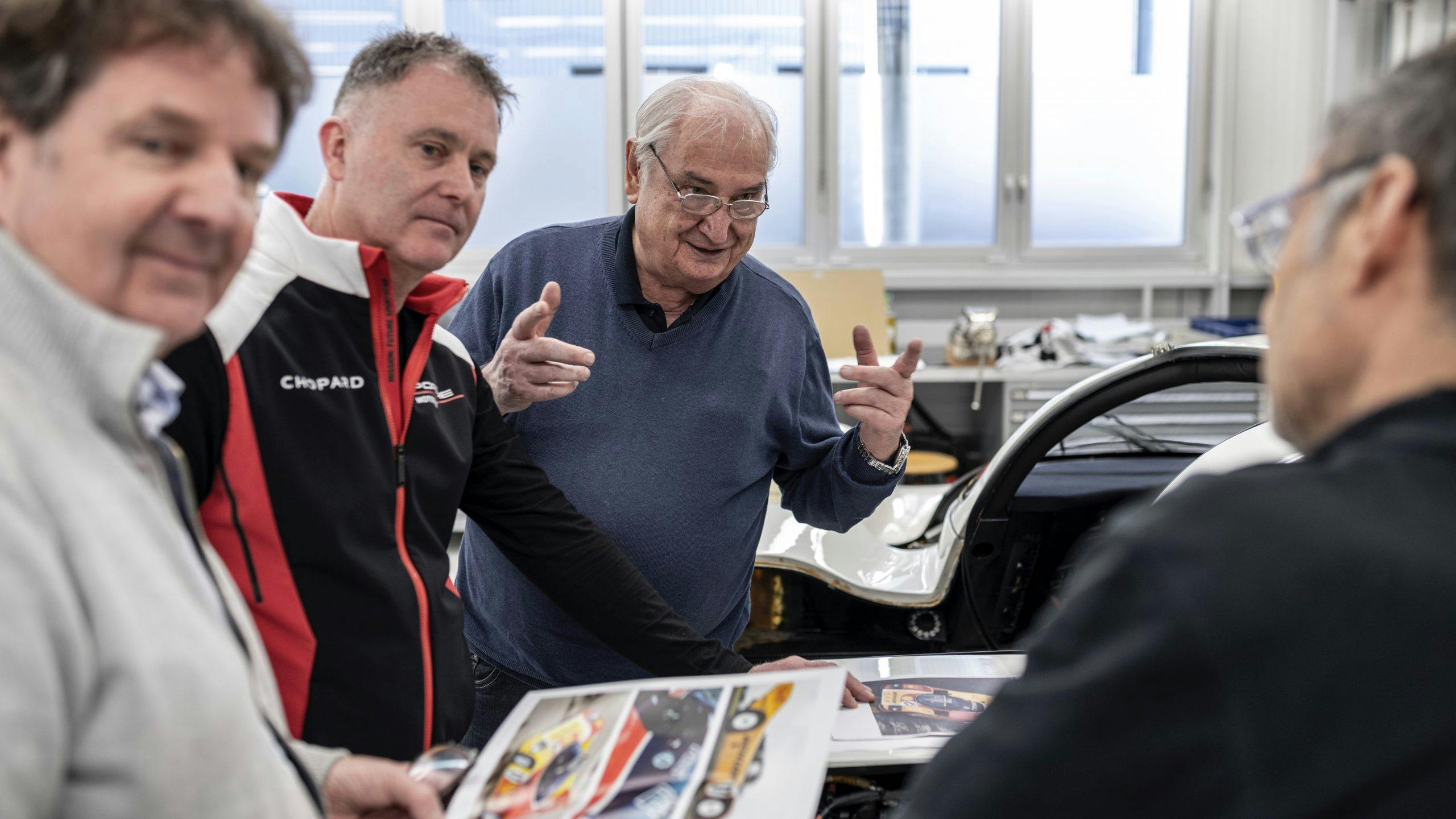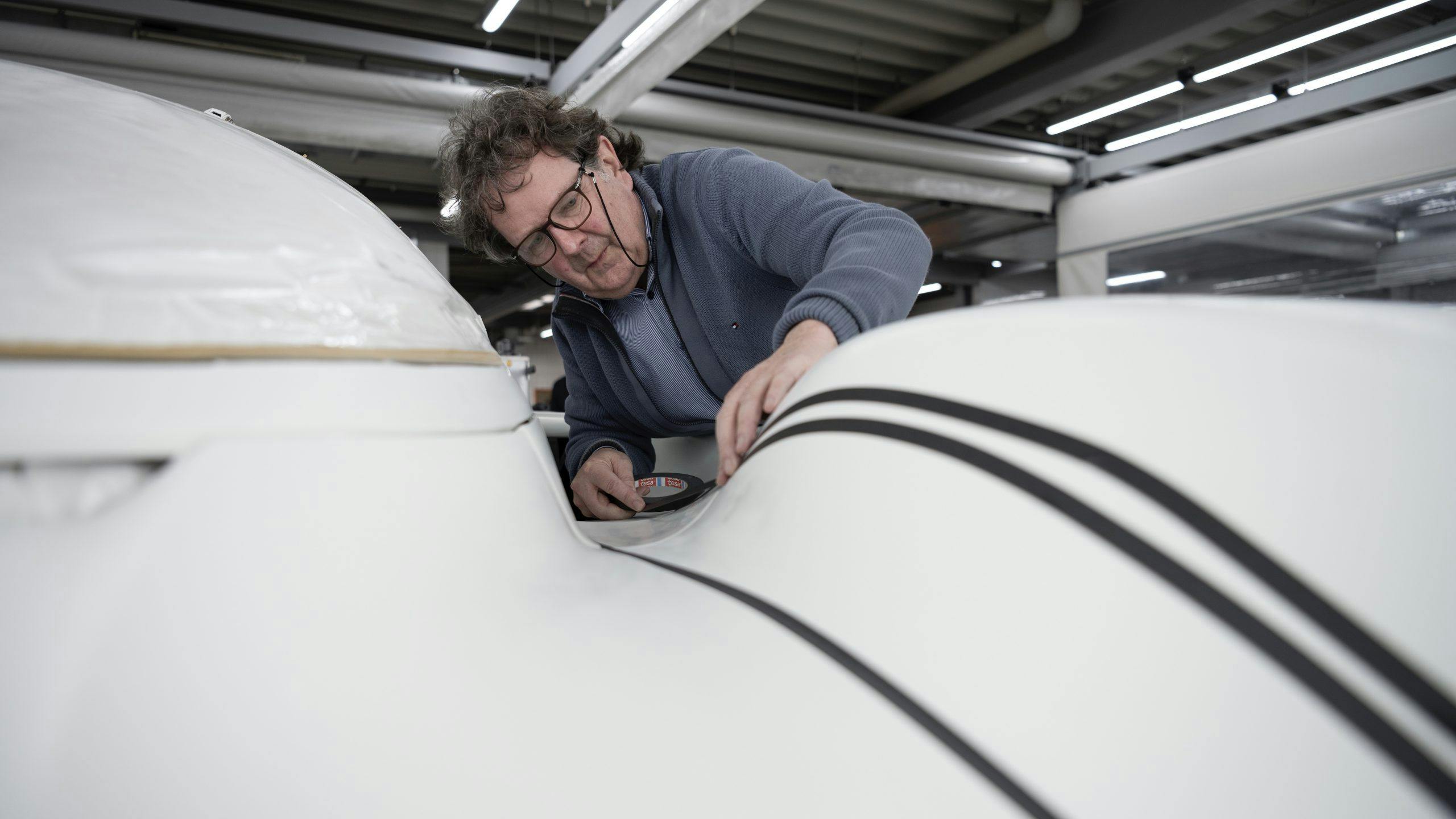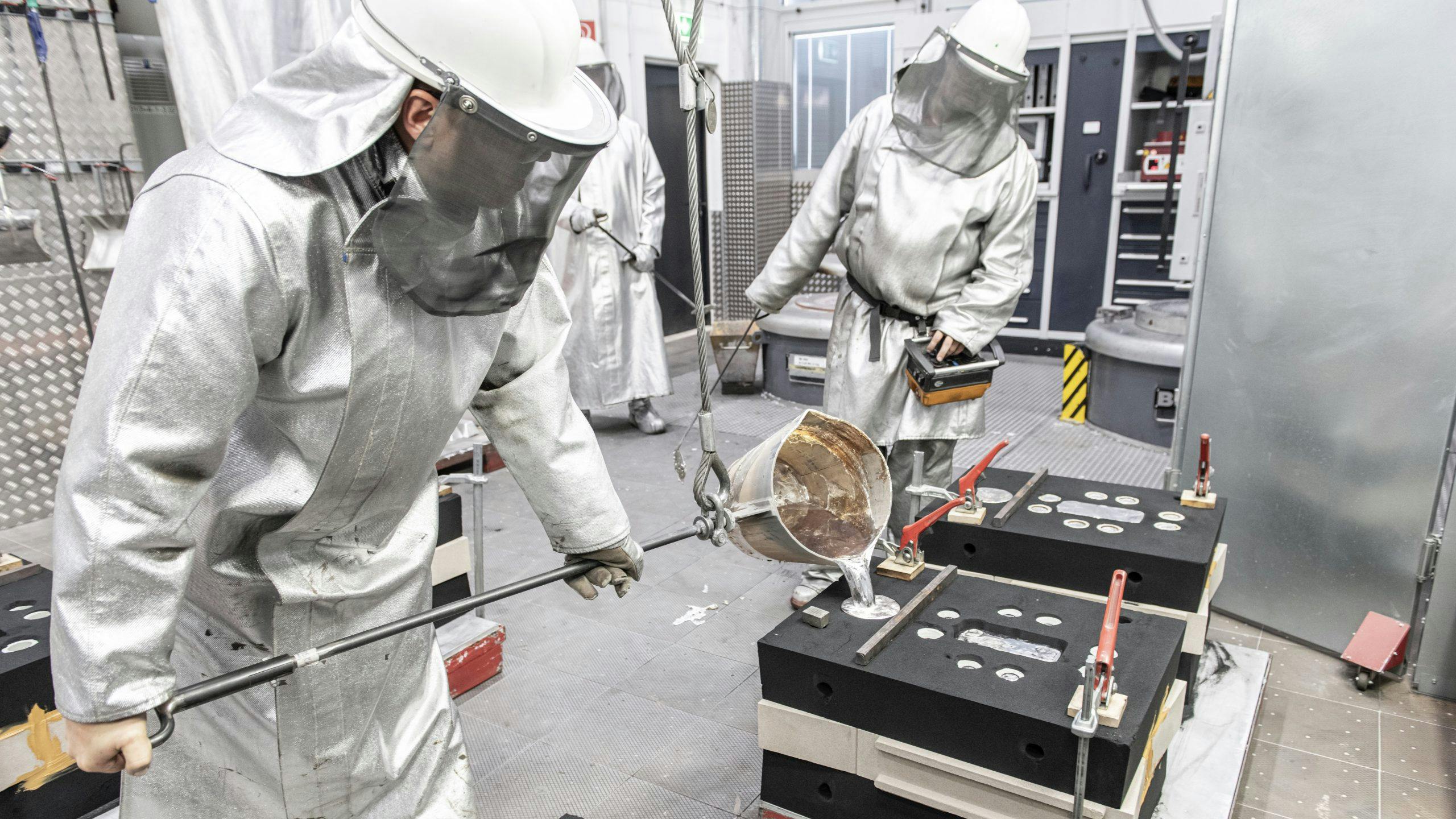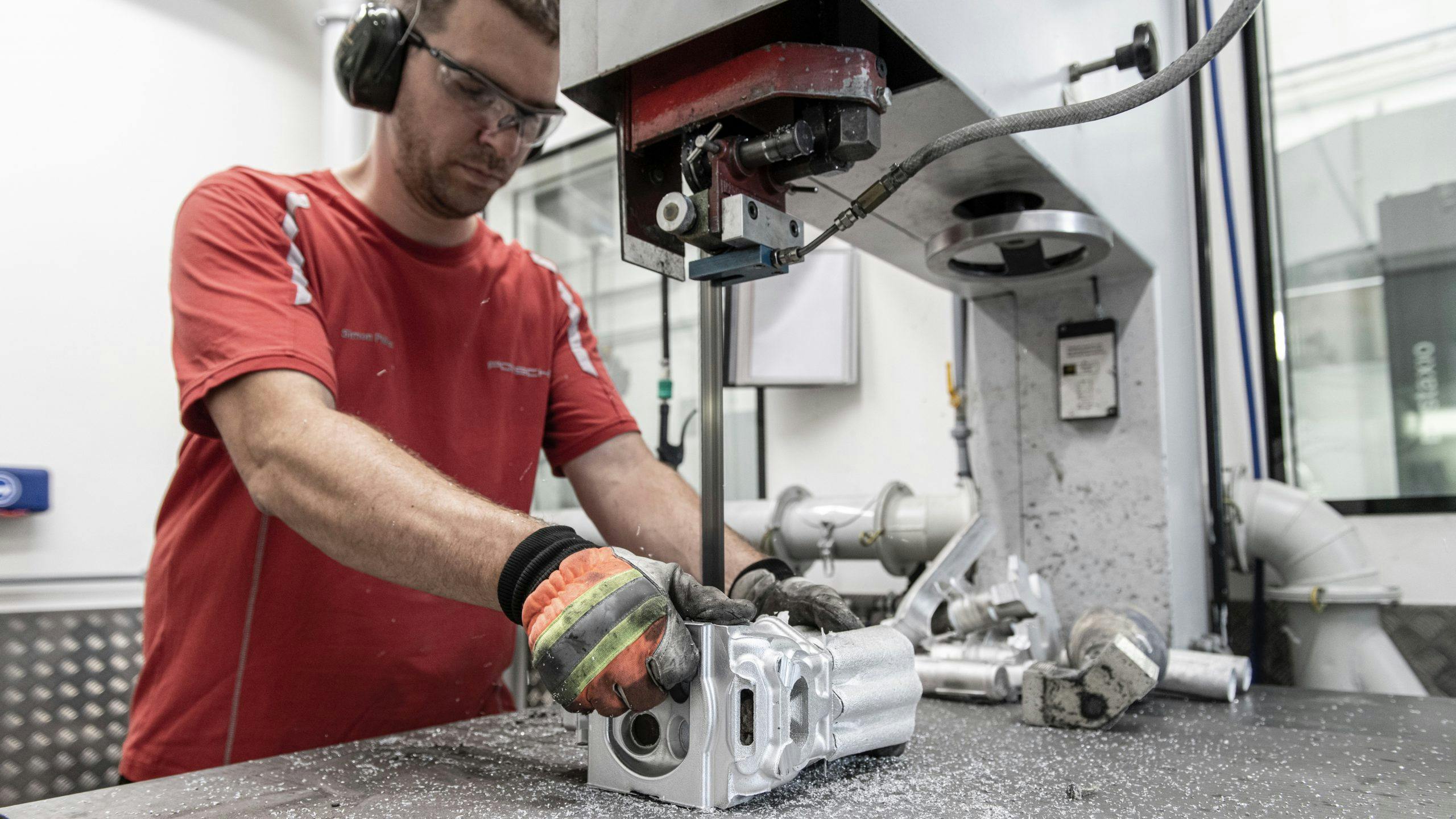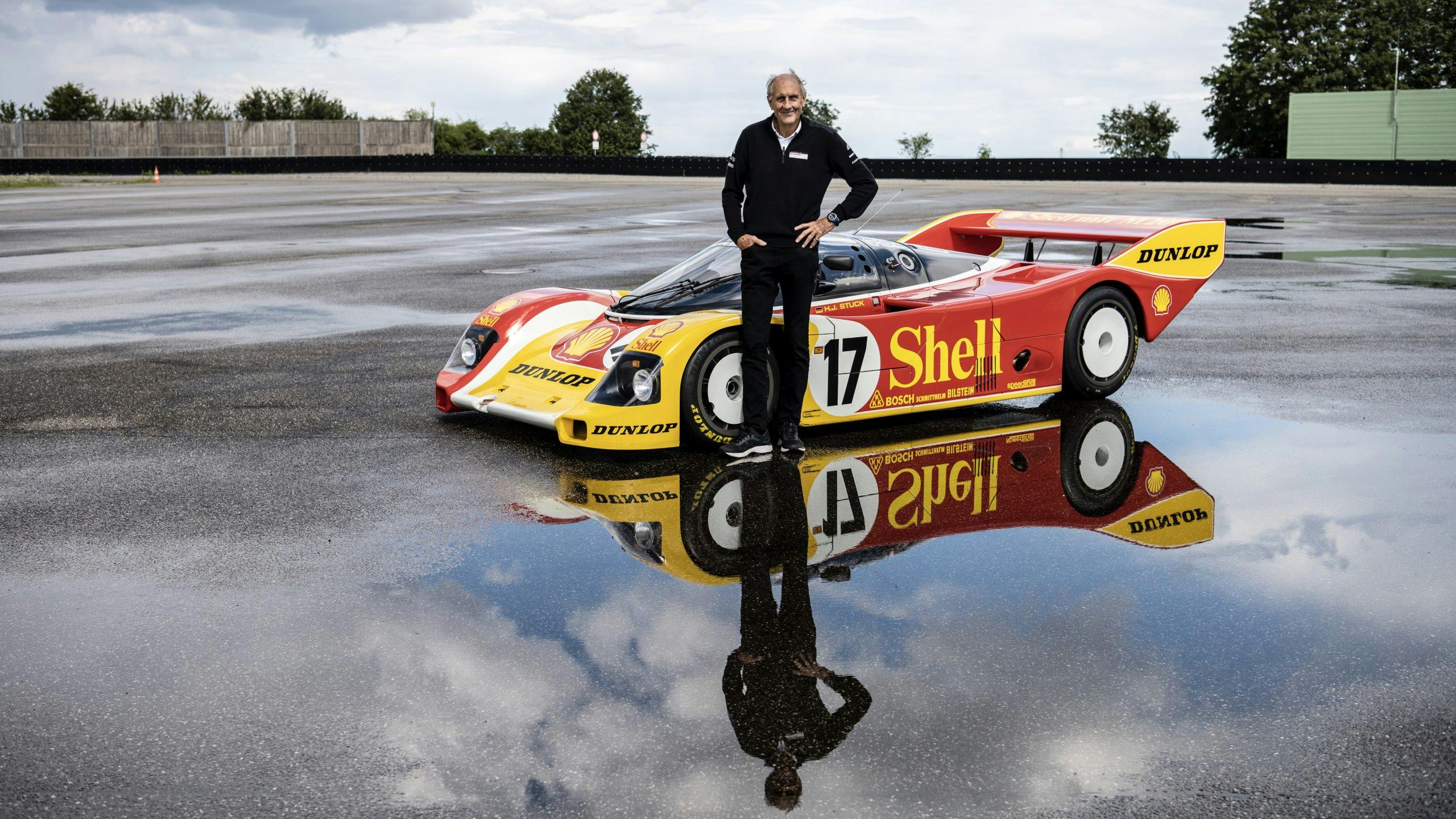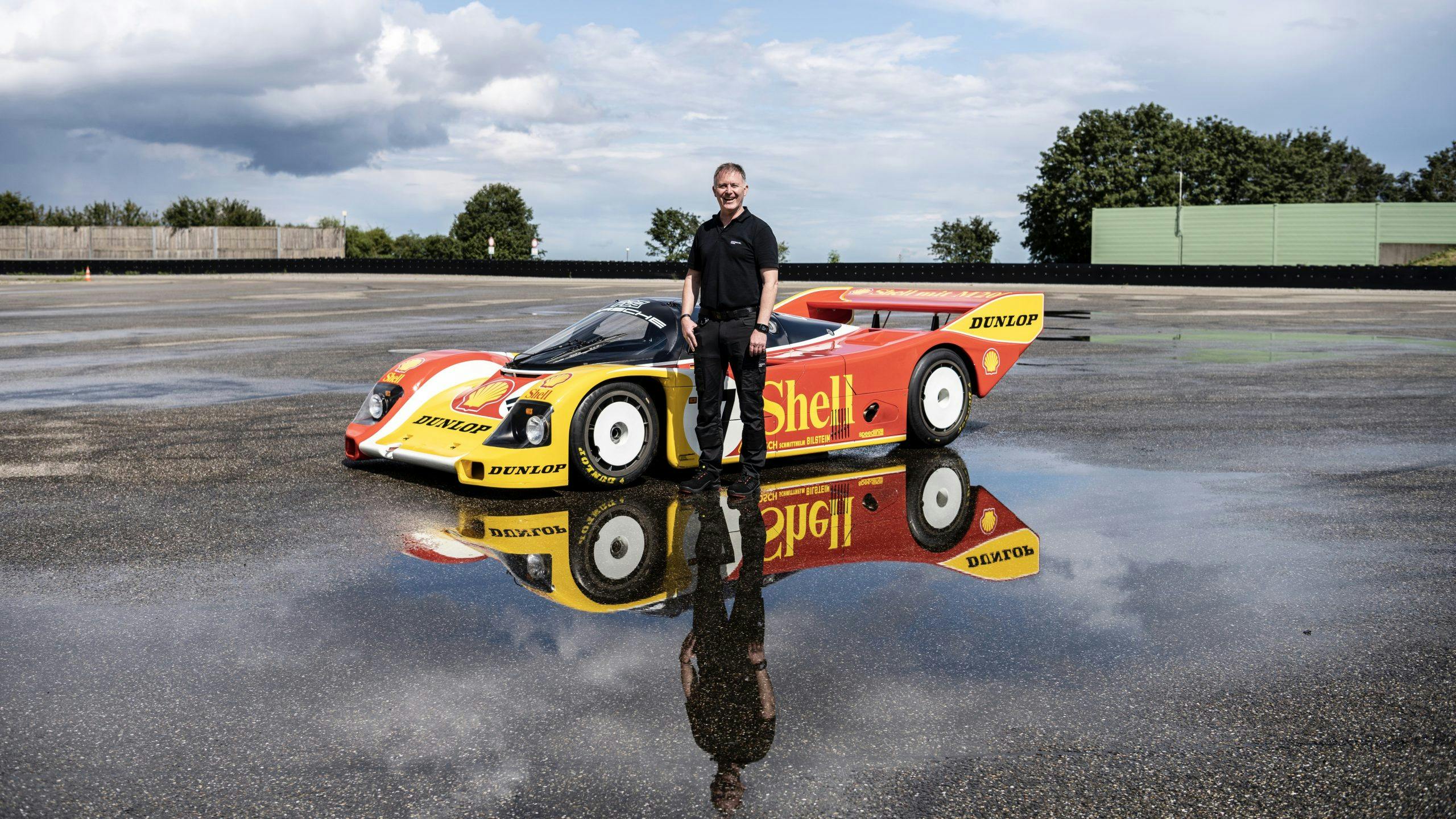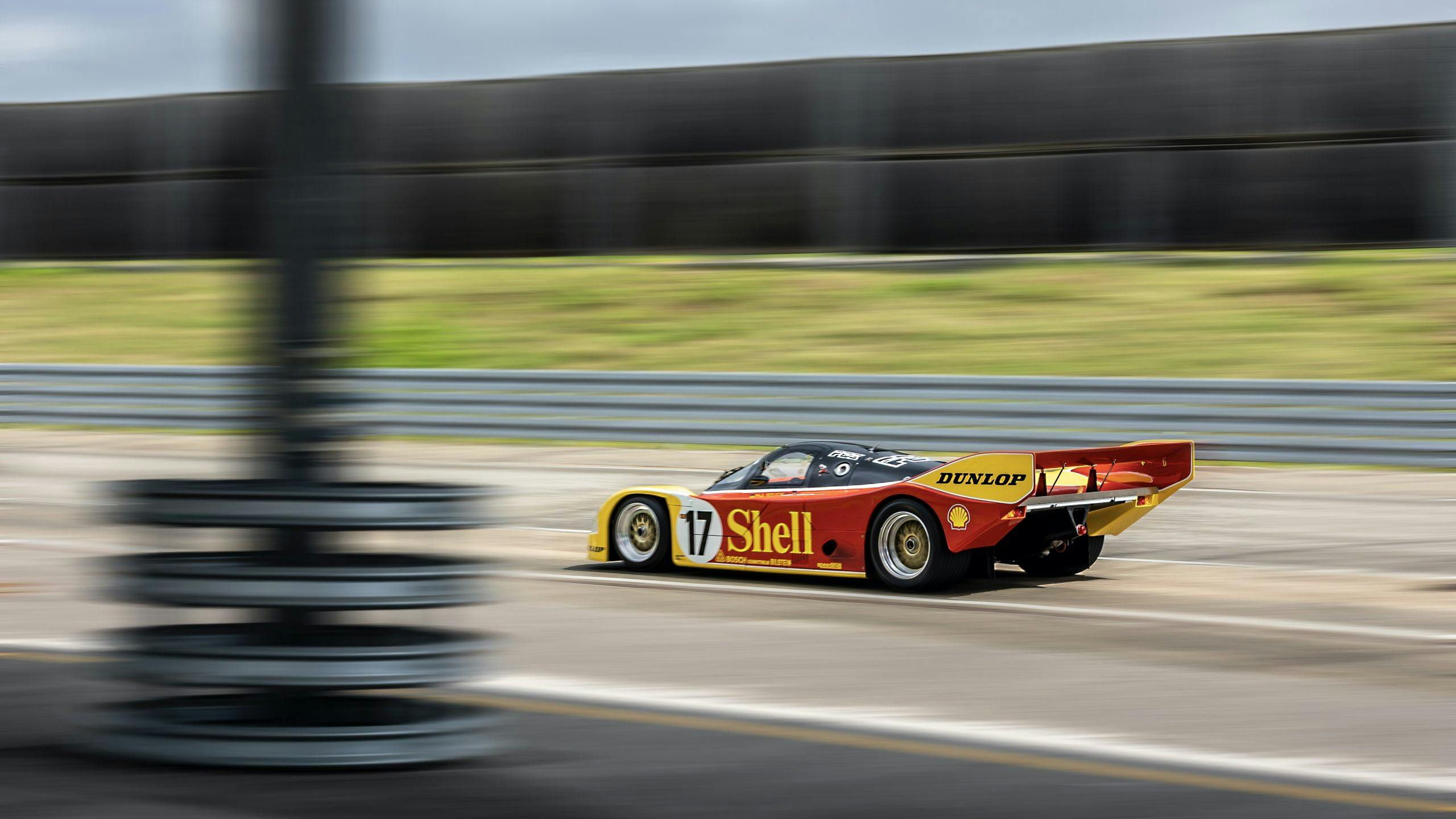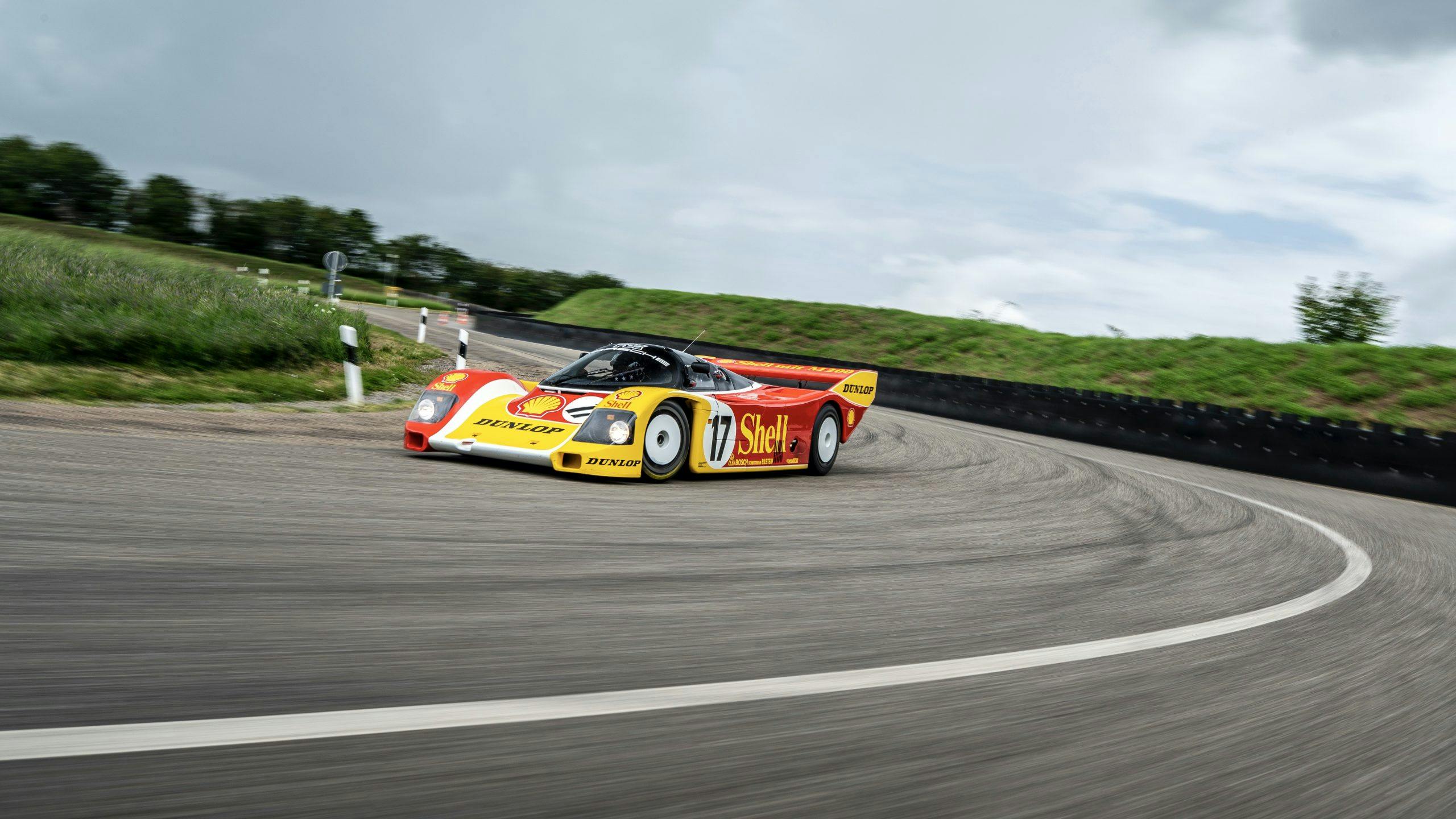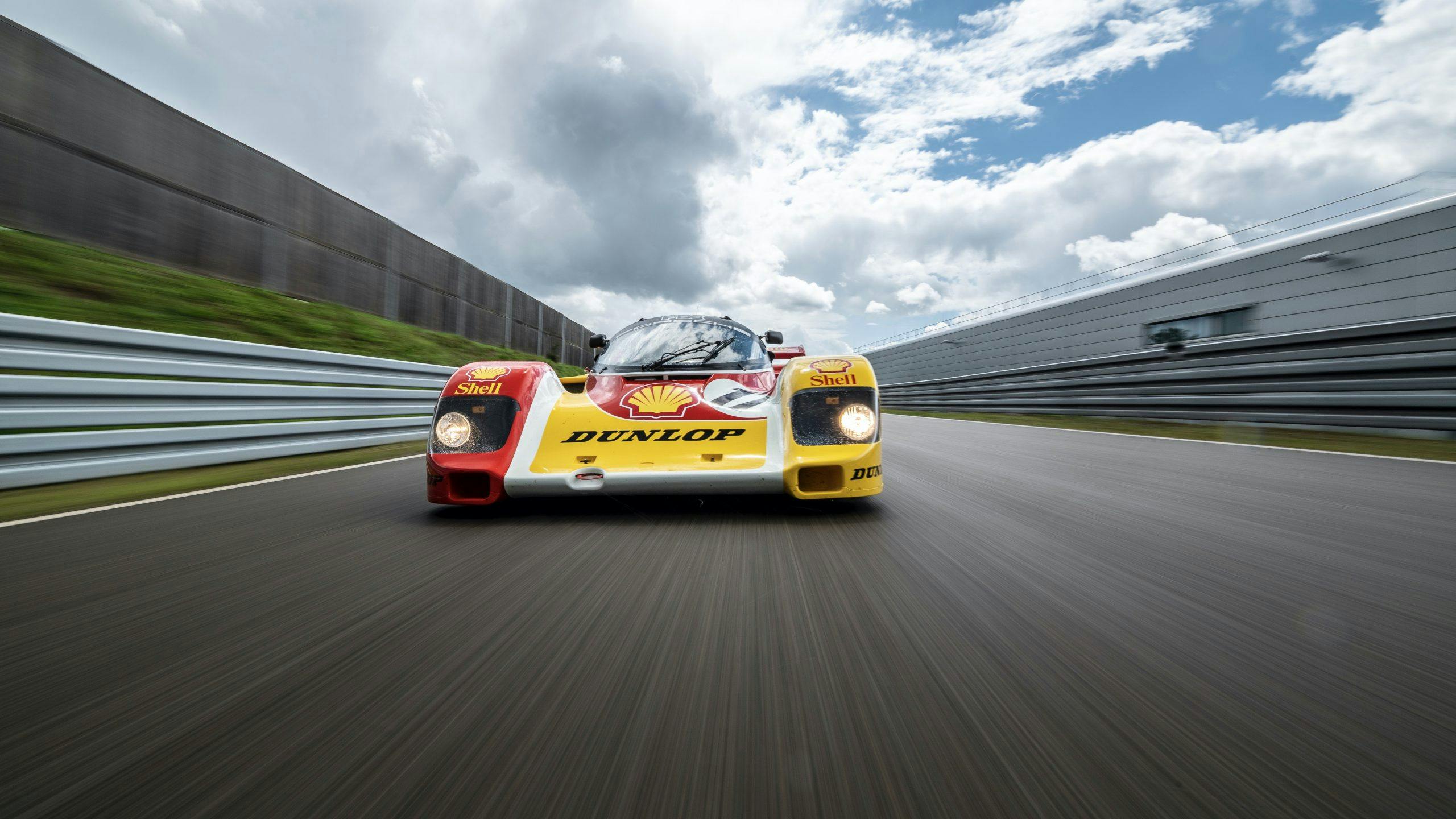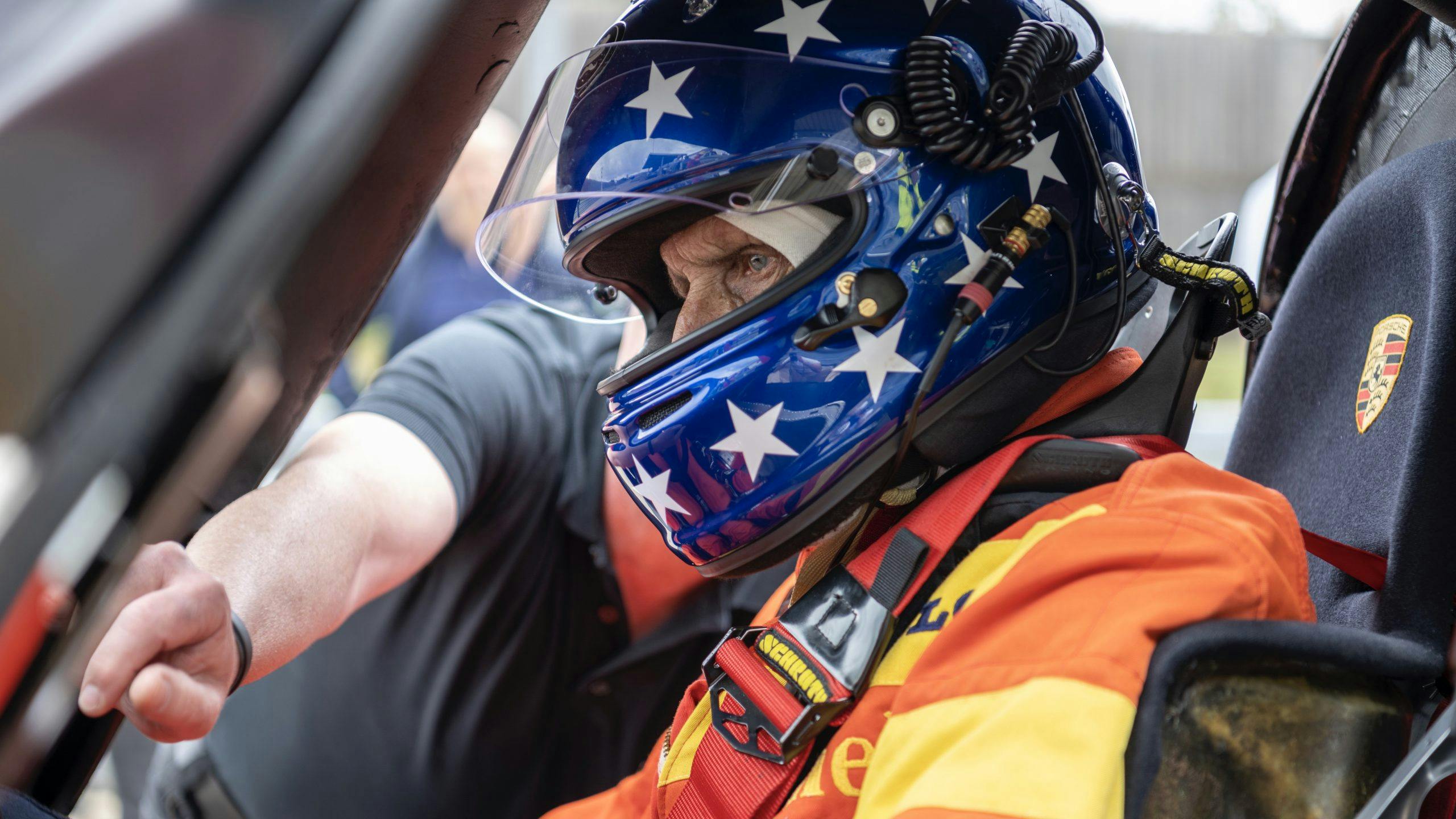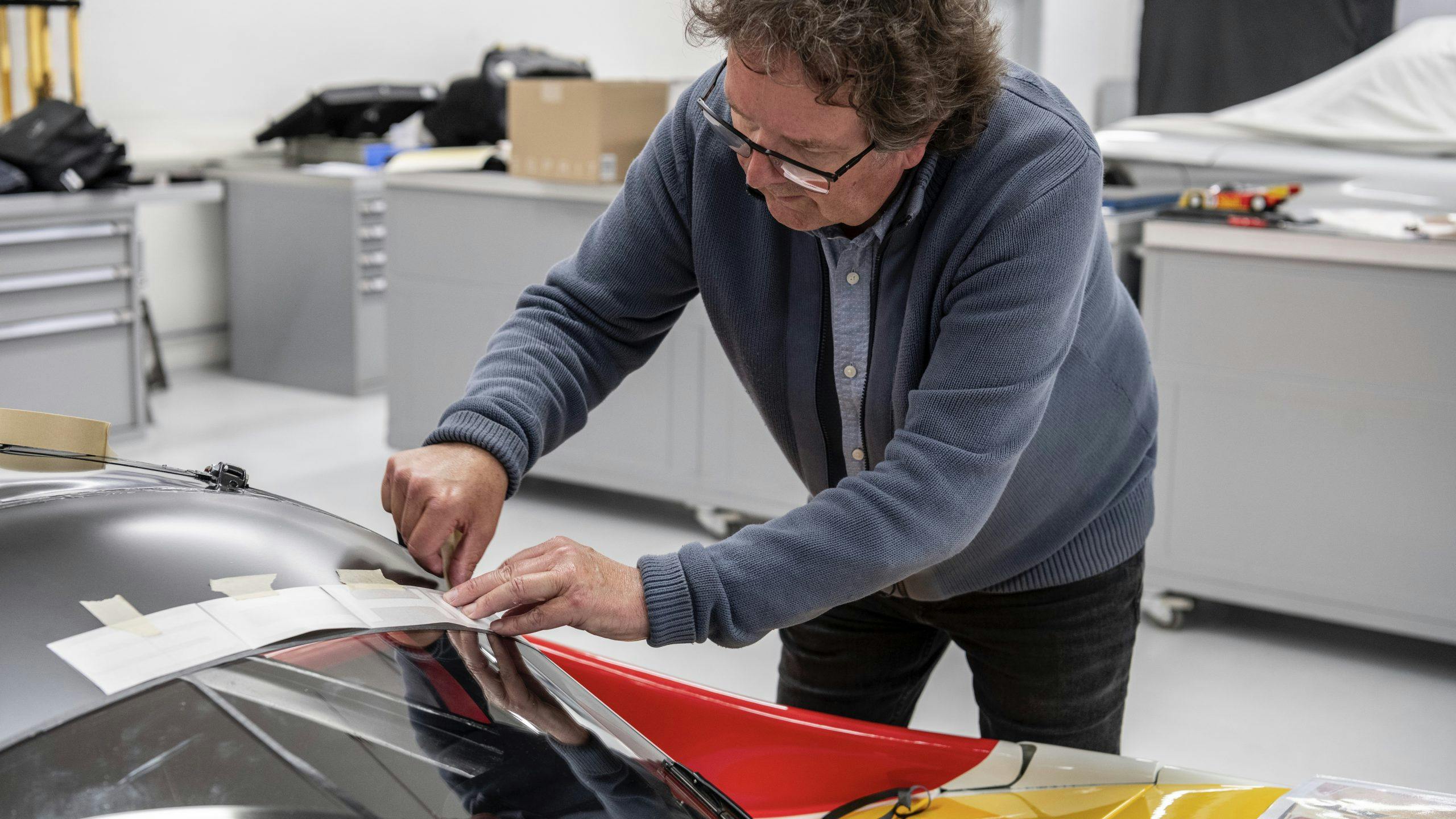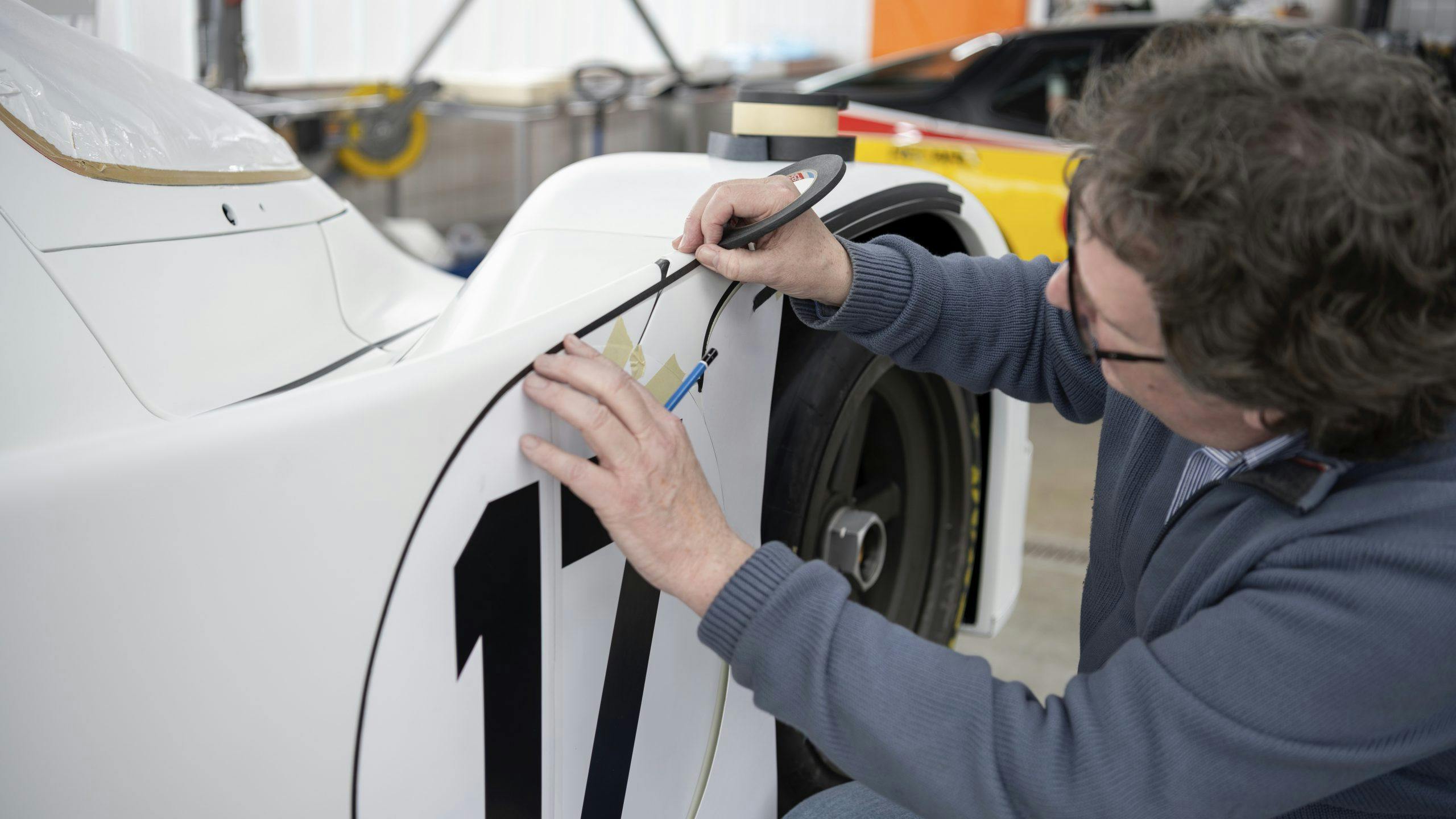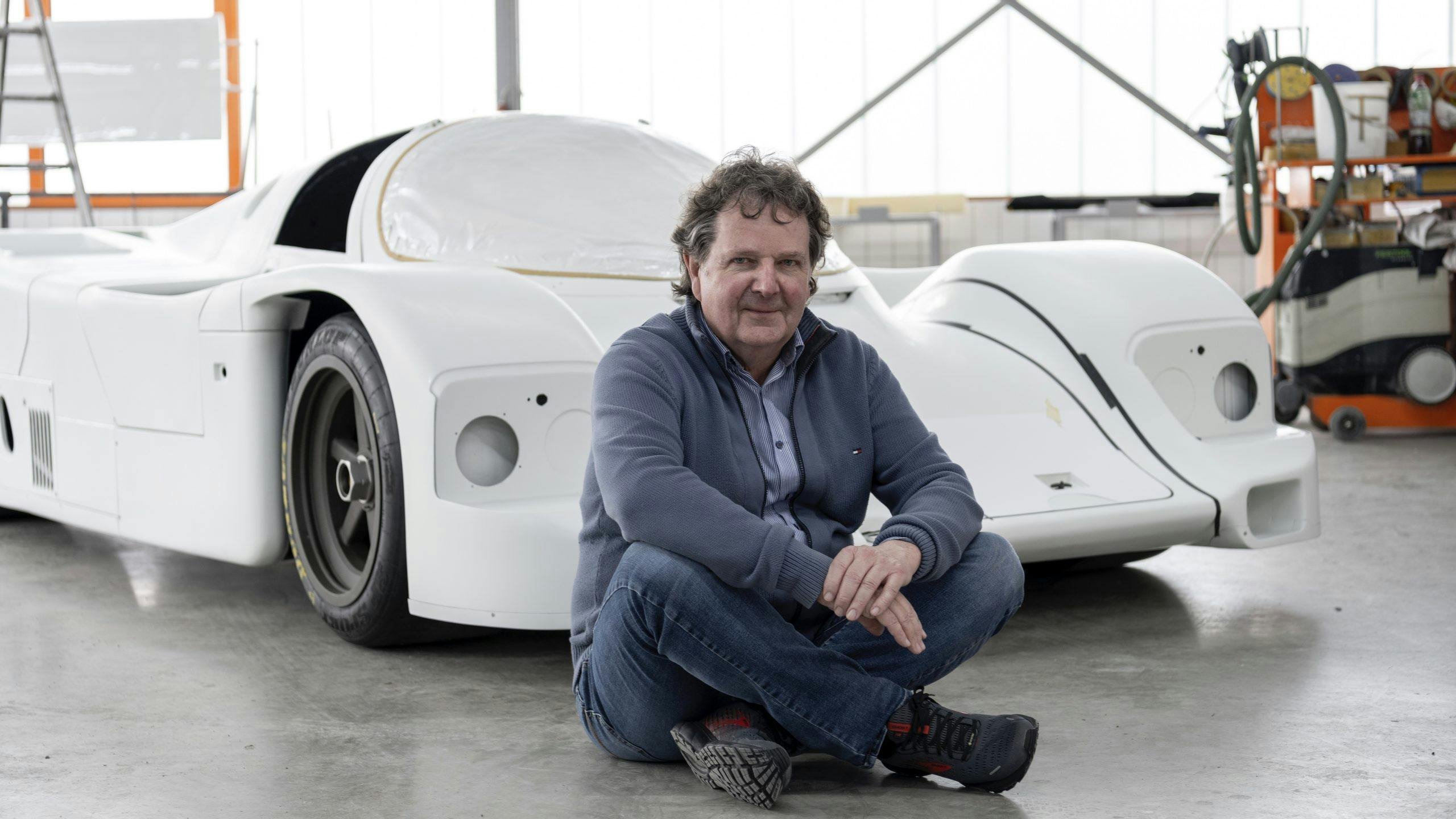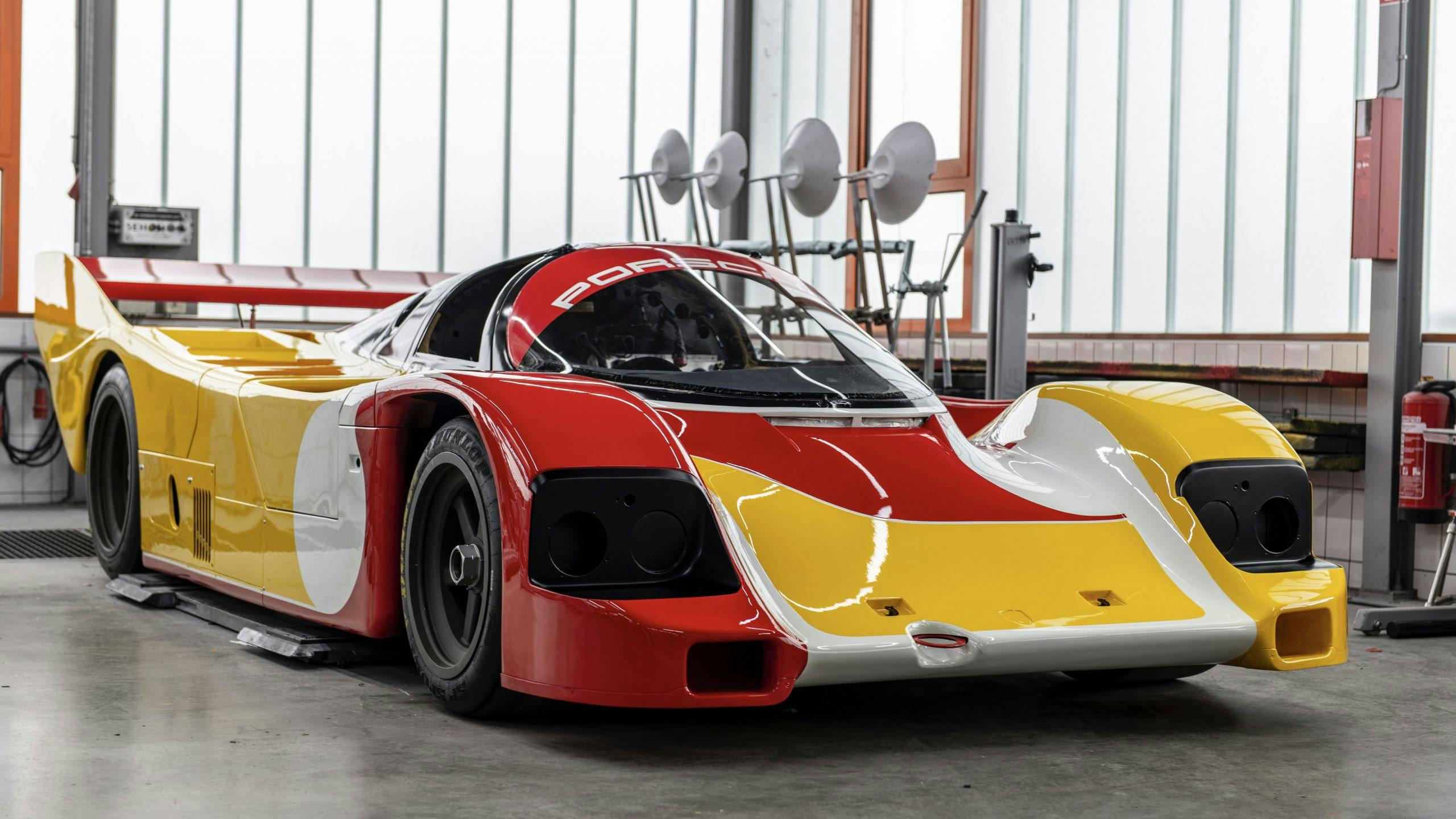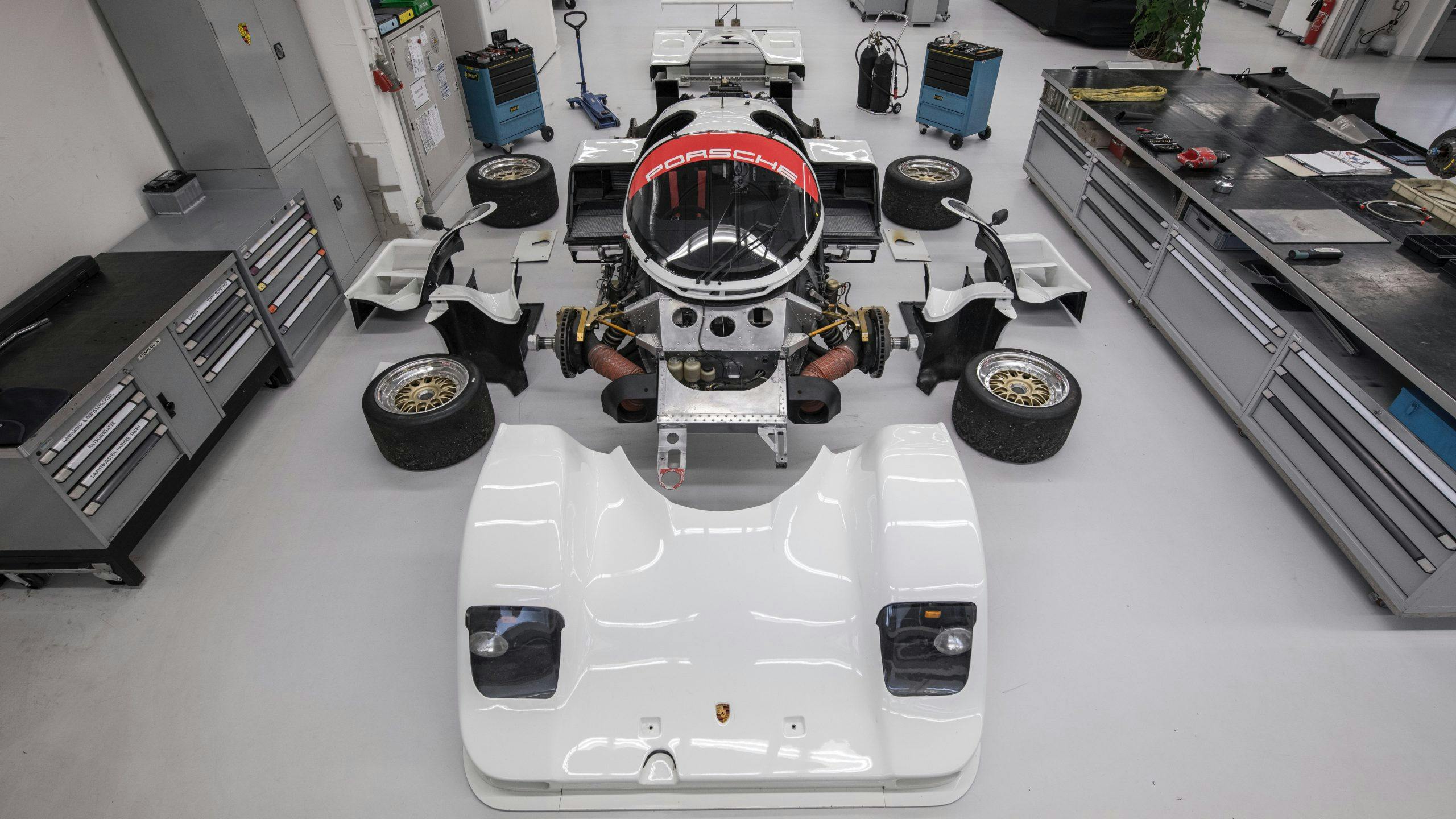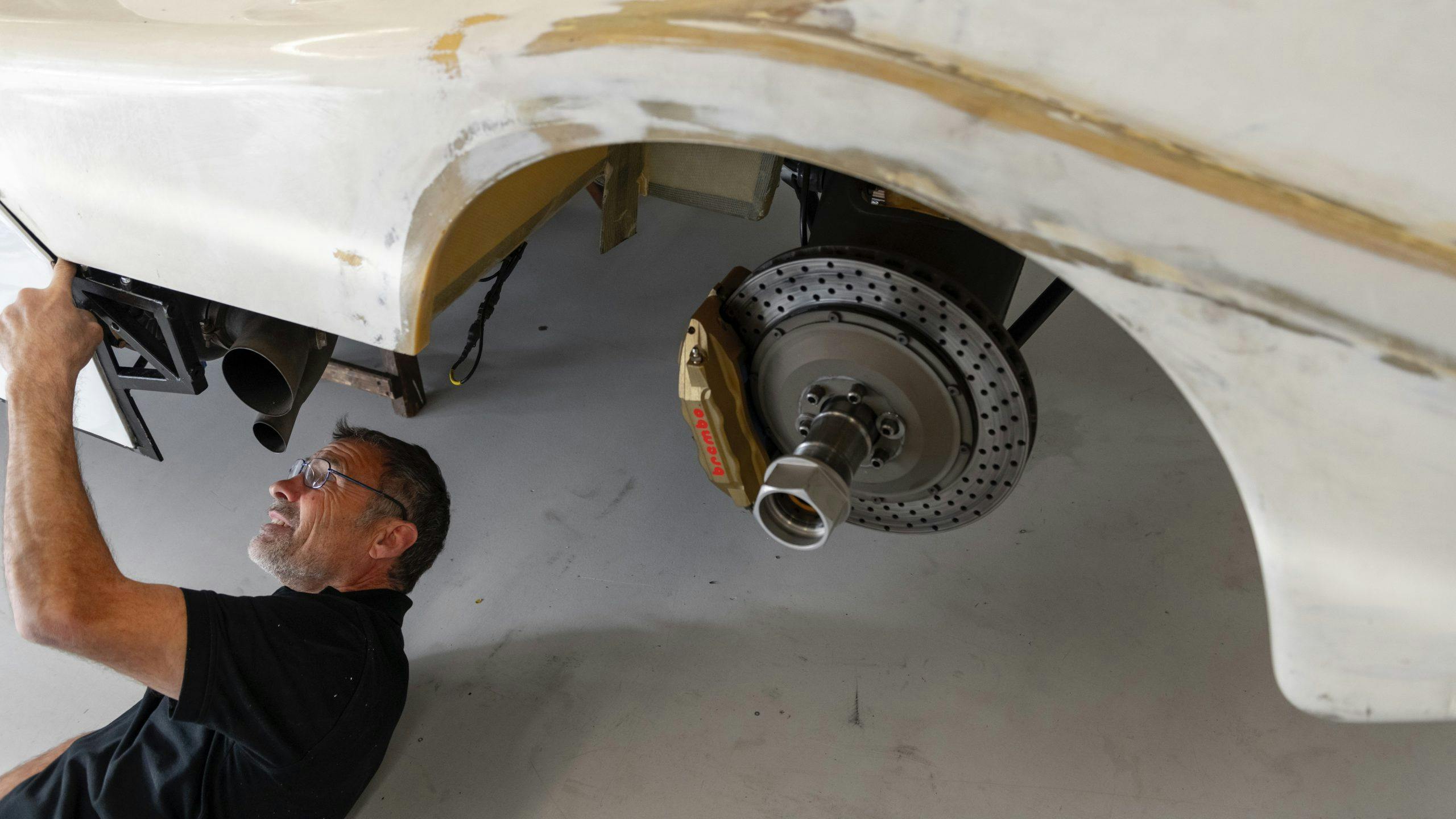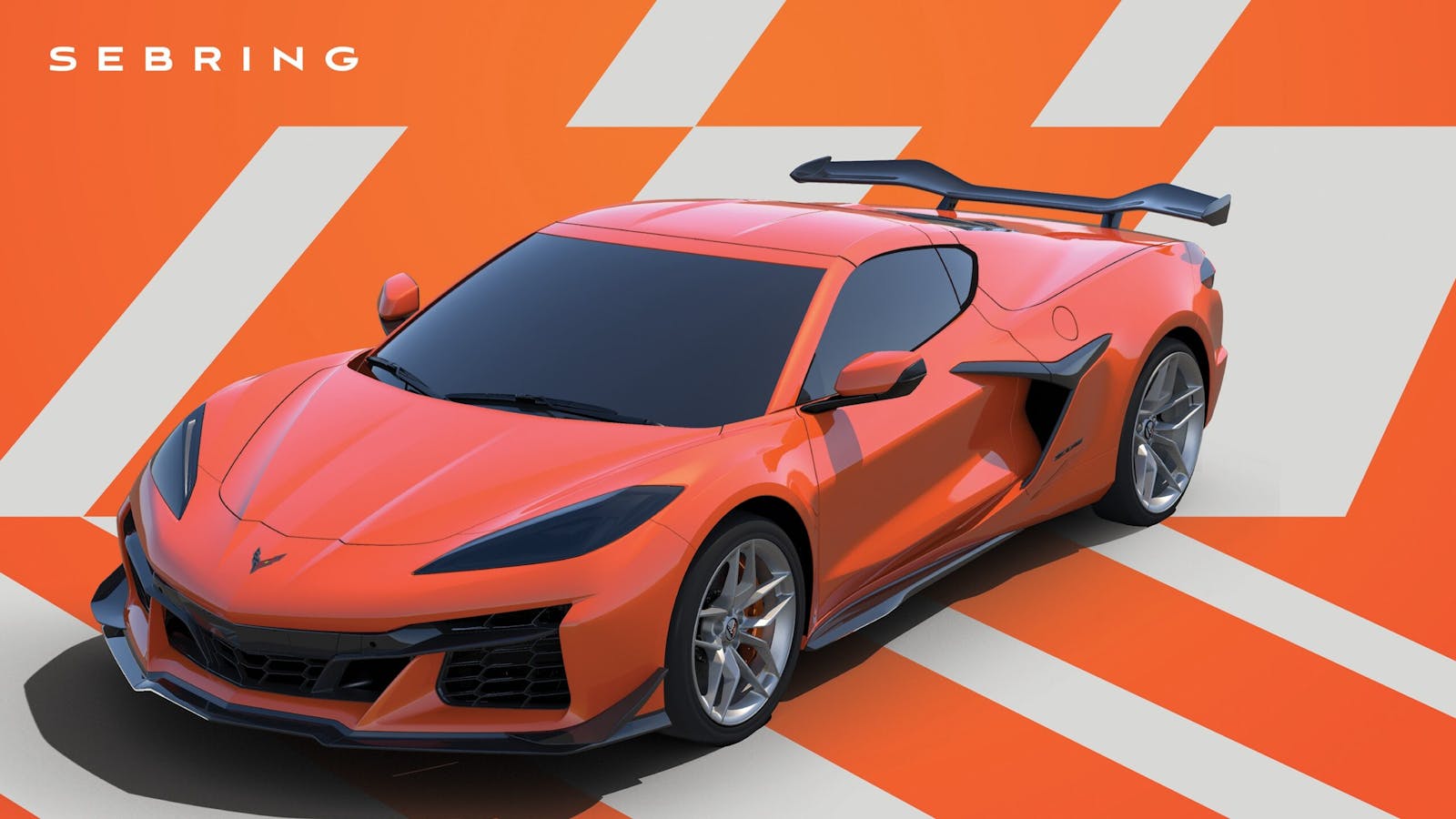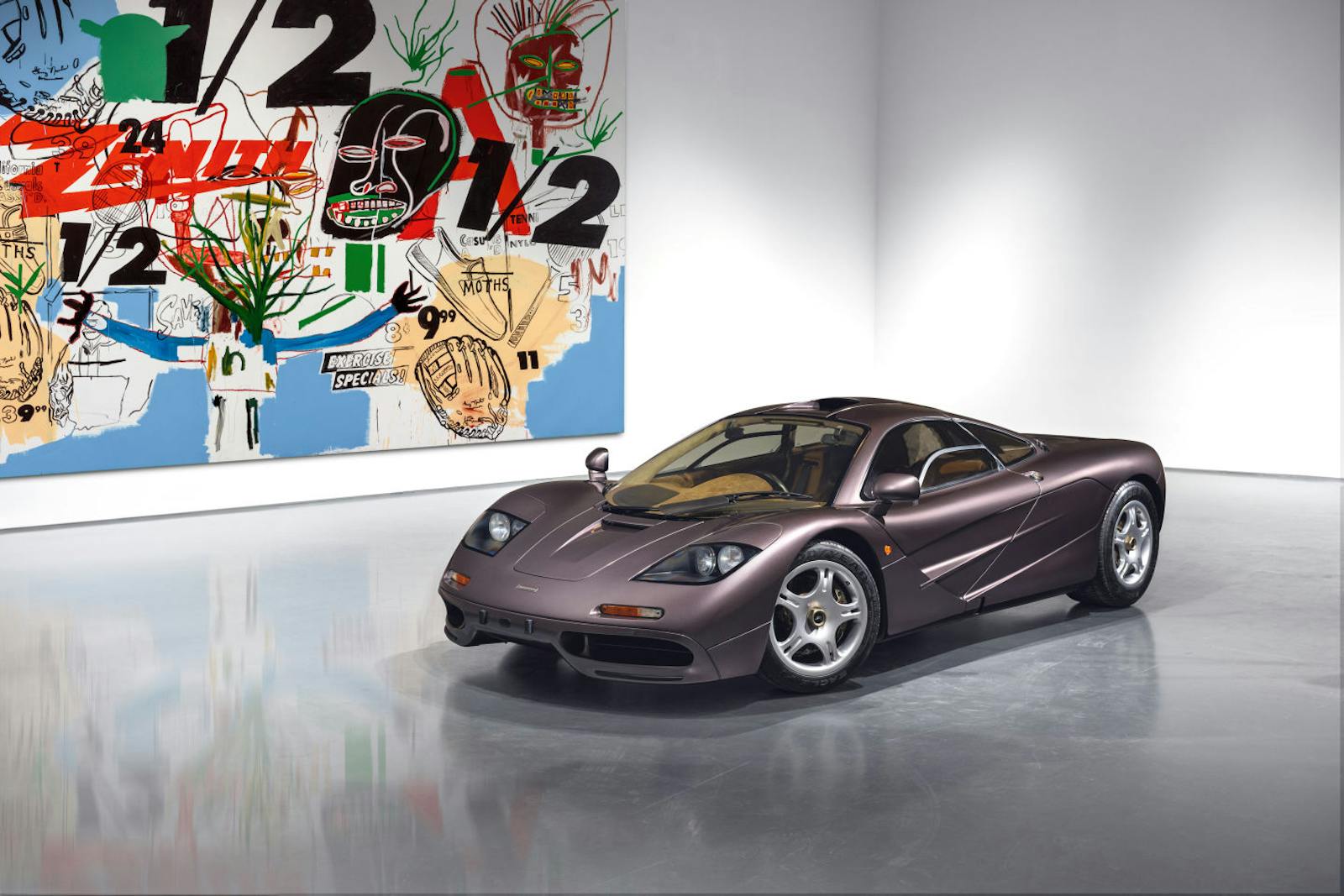After 35 years, Porsche’s factory-restored 962 C meets its original driver for a trackside reunion
Nobody does historic restorations quite like Porsche. The storied German marque has warehouses full of era-defining machinery of both road- and track-going ilk. Among the racing legends, the Porsche 962 stands tall as one of Porsche’s all-time greats, with a competitive career spanning nearly a decade—the equivalent of a few lifetimes in race-car years. Porsche recently hauled one of its most famous 962s out of its warehouse and gave it a meticulous restoration that has us swooning like it’s the late ’80s.
This 962 C was piloted by Hans-Joachim Stuck, royalty even among Porsche’s illustrious pantheon of drivers. (The added consonant denotes this car’s conformity to Group C regulations, one of prototype racing’s greatest eras.) Stuck was reunited with the car upon completion of the restoration, and even got to turn some laps in the machine in front of a cadre of European journalists on hand for #17’s unveiling.
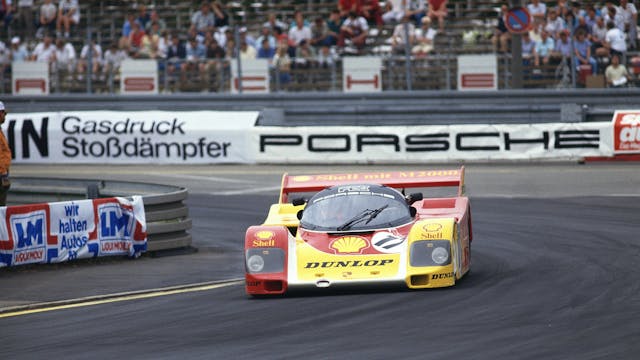
The 962 began life as the 956, an aluminum monocoque car (Porsche’s first of this construction method) designed to race in the World Sportscar Championship and IMSA’s GTP Championship. When IMSA regulations outlawed the 956 because the pedal box was ahead of the front axle, Porsche stretched the wheelbase 4.7 inches to place the axle centerline ahead of the pedal box assembly. Voila, the 962 was born. To keep the IMSA cars and the Group C cars separate (powertrain restrictions forced Porsche to run different turbocharging setups in each series), cars such as #17 were dubbed 962 C.
Stuck has a rich history with the 962. He drove one to victory in the ADAC Würth Supercup championship in 1986, then again in 1987, in the car pictured here. Shell came on board as a primary sponsor in early 1986, bringing with it the striking red-and-yellow livery that the car still wears today. Stuck and the 962 also hold the honor of being the first car/driver combo to test Porsche’s nascent PDK automatic transmission, an ancestor of the gearbox that now graces nearly every car in Porsche’s road-going lineup and is widely considered to be the best automatic design in existence.
The men responsible for the car’s restoration are Armin Burger and Traugott Brecht, of Porsche’s Historic Motorsport team. The two spent the better part of a year and a half reviving every part of the car, going as far as rebuilding long-gone parts of the car. “The cooperation with the other departments from Porsche was great,” says Burger. “We found almost everything we needed within a radius of just 30 meters.”
Burger and Brecht had help, of course. From the get-go, they brought in Norbert Singer, the 962’s designer and Stuck’s race engineer in-period, and Rob Powell, the car’s livery designer, to consult on the car’s restoration. This was—to no surprise—a smart move. Here’s Burger again: “When you hear the right people talking by the vehicle, everything immediately becomes clear. We learned an incredible amount from two witnesses who were right there when it all happened.” With the help of Singer and Powell, Burger and Brecht completely rebuilt the underbody, tweaked the layout of the radiators, and made a host of other bodywork adjustments that result in the car you see here.
The culmination of this group labor of love is a red-and-yellow nostalgia bomb that’s impressive even for Porsche, who has been known to haul out a few mic-drop cars every now and again. Better still: Porsche says this 962 C will hit the road for driving and appearance events aplenty, perfectly timed to coincide with Group C’s upcoming 40th anniversary in 2022.
Restorations are one of the best parts of the classic car hobby. When a force as powerful as Porsche throws its might behind a revival project—especially one as iconic as Hans Stuck’s Shell racing 962 C—the end result is just what we’d expect: Utterly fantastic.
